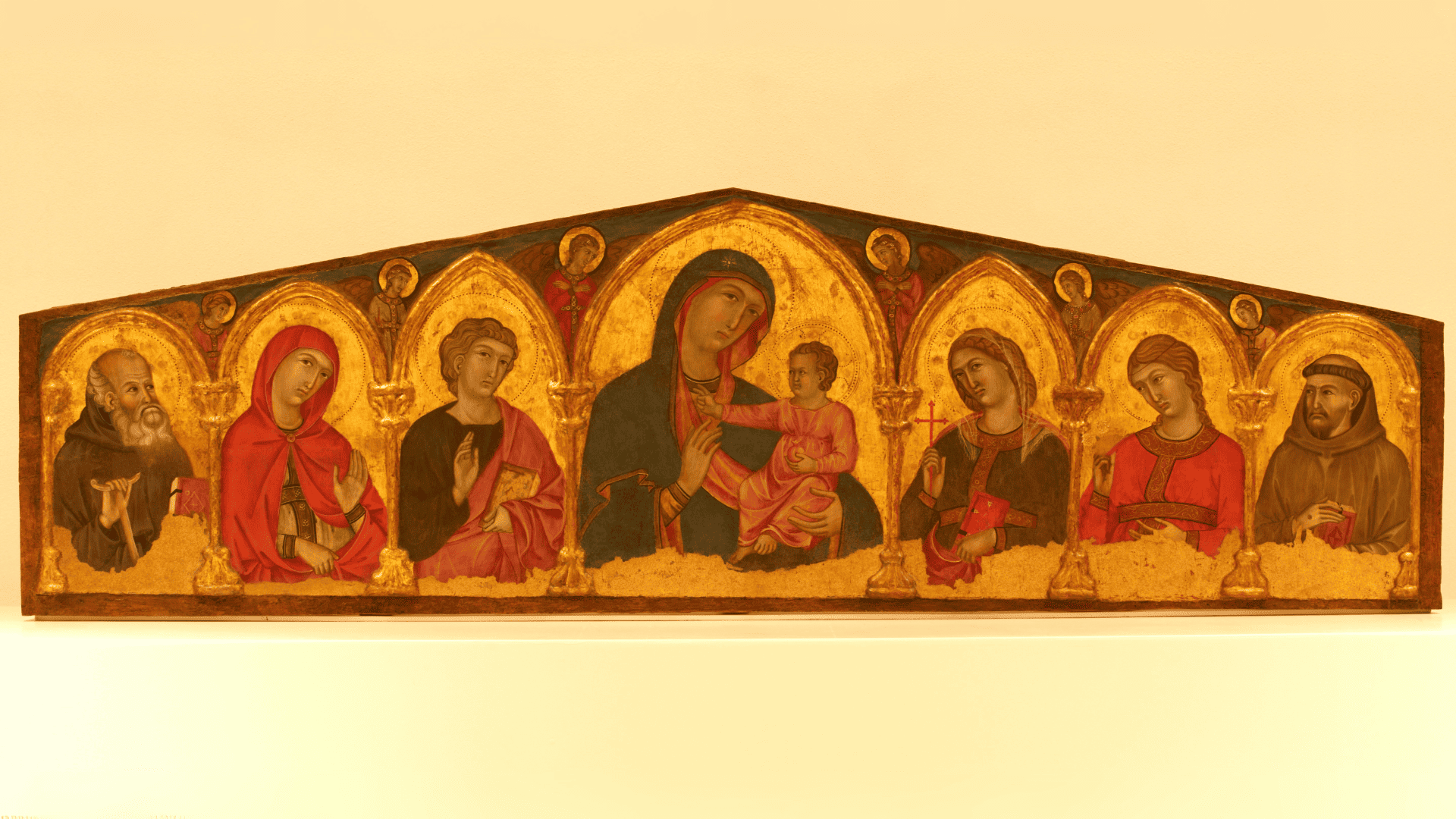In the tempera altarpiece on a gold-leaf panel, seven raised, gilded wooden arches, supported by slender columns, divide the space like a sort of loggia, within which the figures—the main subjects of the composition—are placed. The altarpiece, which was kept in the Archbishop’s Palace of Arborense until 2016, was, according to some 19th-century scholars, originally destined for the Cathedral of Santa Giusta, and its relocation occurred before 1861 (as noted by Giovanni Spano). However, given the presence of Franciscan saints (Saint Francis of Assisi and possibly Saint Clare), it is also possible that the piece was originally connected to a Franciscan commission.
The attribution of the work to Memmo di Filippuccio is owed to Giovanni Previtali (1962), who also suggested that the possible patron was Scolay de Ardinghellis, the Archbishop of Arborea originally from San Gimignano. Scolay was appointed Archbishop after holding the title of Archbishop of Tyre in 1292, and governed the Diocese of Arborea from 1296 until his death in 1299 (or 1300). According to Previtali, it was during Memmo's active period in San Gimignano that he became acquainted with Archbishop Scolay, who may have commissioned the work, possibly intended for his private chapel in the new Sardinian archbishopric (1296–1299/1300).
More recently, Nicoletta Usai (2010) proposed that the work instead belongs to the Pisan artistic circle, specifically to the so-called Master of San Torpè. The altarpiece might have been commissioned by Mariano II Bas-Serra, judge of the Kingdom of Arborea and sworn citizen of Pisa since 1265, who died in 1297 (providing a terminus ante quem for the dating of the work).
The altarpiece is likely the first gold-background panel painting to have arrived on the island and, together with the illuminated liturgical books of the Cathedral of Oristano, stands as one of the earliest testimonies of Tuscan Gothic culture influenced by Franciscan spirituality. It is worth noting that the city, capital of the Giudicato of Arborea, hosted a Franciscan community, building a significant convent complex between 1250 and 1280, a period during which other important works from Tuscany also arrived.
